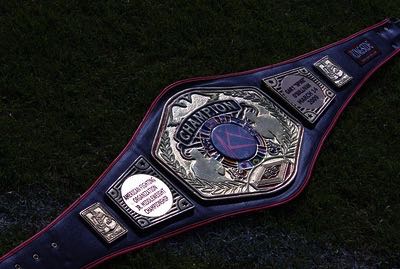
Gavin Golden / Flickr.com
Boxing has been around a long time. Ever since the third millennium BC, in the ancient Sumerian era, when punching or striking between two highly skilled fighters enclosed in a ring was considered an elite sport, some form of boxing has taken place. Entertaining fans worldwide, boxing has become one of the most popular forms of combat both in the professional and amateur sporting scene. Evidence of specific rules of boxing is plentiful in history books, with evidence of such organised bouts dating back to Ancient Greece in 688 BC when boxing was included in the Olympics.
Ever since its early days, the unique sport of boxing has evolved but remains essentially: two fighters attempting to beat their opponent within the bounds of a ring. Undeniably, boxing has great historical importance, but its journey from the ancient eras to modern times has not been exactly straightforward. Today, there are 17* weight classes in boxing, with four major bodies governing the sport by sanctioning fights in the various weight classes, there are belts from each of the organisations in most weight classes, which can make things quite confusing for fans of the sport.
*Note that technically there have been 18 weight divisions since the World Boxing Council introduced the Bridgerweight class in July 2020. It sits between cruiserweight and heavyweight, but at the time of writing, none of the other major sanctioning bodies has adopted the weight so we will discount it for this article.
The Main Belts & Titles

Defence Imagery / Flickr.com
Today, there are in total 17 weight classes that boxers compete in. Boxers from around the world compete in fights in the various weight classes, and though there are various amateur and professional bodies dotted around the globe, some are more highly regarded than others. Indeed four major bodies hold the most weight in the world of boxing and are classed as those with the authority to sanction world title fights.
- The World Boxing Association (WBA)
- The World Boxing Council (WBC)
- The International Boxing Federation (IBF)
- The World Boxing Organisation (WBO)
The World Boxing Association (WBA)
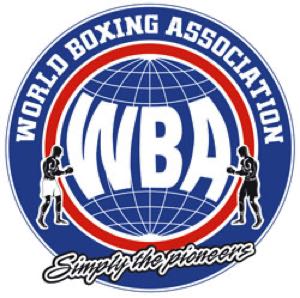 Based in Panama City, the World Boxing Association or the WBA, formerly known as the National Boxing Association (NBA), is the oldest organisation sanctioning professional boxing matches in the various weight classes. A group of 13 state representatives founded the organisation back in 1921 in the United States. The WBA was the only major sanctioning body of the sport for a long time. The match between Jack Dempsey and Georges Carpentier in the heavyweight championship category fought in New Jersey was the first bout the organisation ever recognised in July 1921. Dempsey won by knockout in the fourth round and the fight was the first in history to produce over a million dollars in revenues.
Based in Panama City, the World Boxing Association or the WBA, formerly known as the National Boxing Association (NBA), is the oldest organisation sanctioning professional boxing matches in the various weight classes. A group of 13 state representatives founded the organisation back in 1921 in the United States. The WBA was the only major sanctioning body of the sport for a long time. The match between Jack Dempsey and Georges Carpentier in the heavyweight championship category fought in New Jersey was the first bout the organisation ever recognised in July 1921. Dempsey won by knockout in the fourth round and the fight was the first in history to produce over a million dollars in revenues.
The organisation has been sullied various allegations of corruption over the years. There have been reports of referees being asked to favour a particular fighter during bouts, officials taking bribes to increase the chances of gaining shots at championship fights and promoters paying off the organisation to increase the rankings of their fighters.
The World Boxing Council
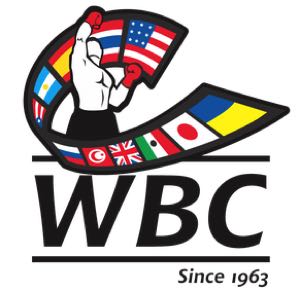 Often revered as the most prestigious of all the international sanctioning organisations of boxing, the World Boxing Council (WBA) is famous for sanctioning high profile matches. It is no surprise that legendary fighters like Mohammad Ali and icons of contemporary boxing including Floyd Mayweather have held a WBC title in their careers. The WBC was formed in 1963 just a year after the WBA changed to its current name.
Often revered as the most prestigious of all the international sanctioning organisations of boxing, the World Boxing Council (WBA) is famous for sanctioning high profile matches. It is no surprise that legendary fighters like Mohammad Ali and icons of contemporary boxing including Floyd Mayweather have held a WBC title in their careers. The WBC was formed in 1963 just a year after the WBA changed to its current name.
The establishment included representatives from 11 countries who were invited by Adolfo Lopez Mateos, then president of Mexico, to come together and form the organisation. The countries previously recognised other organisations like the WBA (then NBA) but felt they lacked an international appeal. Today it has 161 member countries. Their belt has the symbol of all the 161 member countries and the same style of belt is awarded to all champions regardless of the weight class.
International Boxing Federation (IBF)
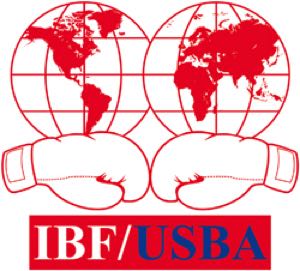 Succeeding the United States Boxing Association, the IBF is another one of the four major sanctioning organisations that oversee professional boxing matches. The WBA’s annual convention decides the next president of the organisation. Robert W Lee campaigned for himself to be the next president of the WBA in 1983’s convention held in Puerto Rico. However, he couldn’t win his bid and it resulted in him and several others withdrawing from the organisation.
Succeeding the United States Boxing Association, the IBF is another one of the four major sanctioning organisations that oversee professional boxing matches. The WBA’s annual convention decides the next president of the organisation. Robert W Lee campaigned for himself to be the next president of the WBA in 1983’s convention held in Puerto Rico. However, he couldn’t win his bid and it resulted in him and several others withdrawing from the organisation.
At the time, Lee was the president of the USBA which was a regional organisation and he created the USBA-International in 1983. As the organisation started gaining in popularity, it was rebranded as the IBF. Marvin Camel who was a former WBC cruiserweight champion accepted IBF’s recognition in the same weight category.
IBF has a couple of legacy issues up its sleeve, barring the bribery scandals in which the IBF’s president Robert Lee and his son were mired. The IBF crowned its interim president Hiawatha Knight as the organisation’s president following Lee’s conviction. This made her the first woman to ever hold the presidency of any major boxing governing body. In 2017, the IBF entered the Muaythai space by holding its first Muaythai convention and naming champions of Muaythai in three different categories.
World Boxing Organisation (WBO)
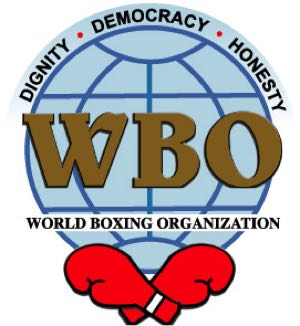 Another of the WBA’s annual conventions sparked the creation of the fourth of the major boxing sanctioning bodies. The convention was held in Isla Margarita in 1988 where a group of Dominican and Puerto Rican businessmen fell out of the WBA after a disagreement over applicable rules in the sport. They created the World Boxing Organisation which started hosting various matches around the world.
Another of the WBA’s annual conventions sparked the creation of the fourth of the major boxing sanctioning bodies. The convention was held in Isla Margarita in 1988 where a group of Dominican and Puerto Rican businessmen fell out of the WBA after a disagreement over applicable rules in the sport. They created the World Boxing Organisation which started hosting various matches around the world.
While its progress was slow, many popular fighters in the lightweight championships like Naseem Hamed and Johnny Tapia held the WBO belts and gave it an element of prestige. To choose their heavyweight champion, one of the important titles given out by anybody, the WBO sanctioned a fight between two lesser-known fighters, Francesco Damiani and Johnny DuPlooy.
Other Boxing Titles & Belts
While the abovementioned are the four major boxing organisations, a fighter can hold belts and titles awarded by many other organisations; currently there are 66 other regional organisations that sanction matches and gives out titles in their particular areas of governance.
The Ring – Magazine & Championship
 The Ring is a boxing magazine started in 1922 (as a boxing and wrestling magazine) and intended to make boxing championships and awards more linear and exclusive to only the very best of fighters. It started out awarding titles of its own in 1922. The only way to hold the Ring championship title is either by defeating the reigning champion or winning a box-off that is only open to the Ring’s number one and number two contenders of any particular weight category.
The Ring is a boxing magazine started in 1922 (as a boxing and wrestling magazine) and intended to make boxing championships and awards more linear and exclusive to only the very best of fighters. It started out awarding titles of its own in 1922. The only way to hold the Ring championship title is either by defeating the reigning champion or winning a box-off that is only open to the Ring’s number one and number two contenders of any particular weight category.
This means that even if the Ring awards the top fighter status to any fighter in a weight category, the fighter only holds it when after winning a match against its number two contender. The Ring is often considered to be the most legitimate title given out to fighters due to its tough eligibility criteria, though it is not technically a sanctioning body. The Ring titles are also perceived to be free of scandals that have tainted every one of the four major organisation’s images. The Ring fighters do not pay any sanctioning fees and can fight to defend the title for free.
How Boxing Grew in Popularity
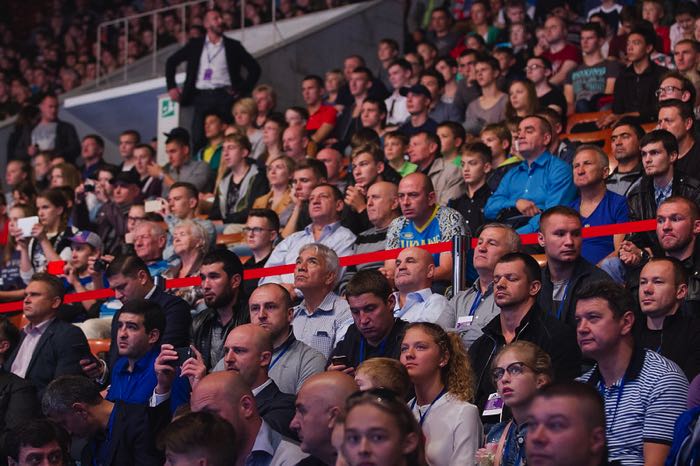
IBA Boxing / Flickr.com
As mentioned, boxing – or at least early forms of the sport – stretches back a long way in the history of our civilization. In the Middle Eastern and Egyptian regions, depictions of boxing have been assessed to be thousands of years old. Even ancient India has references to boxing in Rig Veda and the Ramayana. Greece made boxing an official sport in the Olympics in 688 BC. However, soon after the fall of the western Roman Empire, the popularity of boxing diminished, at least as an organised sport.
Early Boxing
It was in the 16th Century that traces of classical boxing started to surface in England. Commonly known as prizefighting, fighters fought with bare knuckles in London Prize Rings. Since then, boxing gained popularity amongst men in cities around the world. However, the martial art has not always had the prestige attached to it that it enjoys today. In the 19th and 20th centuries, boxing was often practised in illegal settings like underground battling arenas, gambling dens and private rings.
Despite being common in the US and England, bouts were often interrupted by the police and boxers struggled to gain legal status for many years throughout the 19th Century. As these illegal rings strived under the increasing pressure of the law, some of them became big money-making enterprises. The introduction of the Marquess of Queensbury Rule in 1867 helped to standardise boxing bouts and this led towards a greater acceptance from the authorities and the general population.
Governing Bodies Formed
Finally, it was time for the world to accept boxing. The establishment of major governing bodies, awarding prizes in the form of belts and titles and the fact that stadiums could be filled with dedicated fans who follow the sport closely made boxing grow to become an elite sport.
As the sport continues to evolve, there have been many fighters and boxing legends who left their legacy for fans to relish and future fighters to attempt to emulate. Four major governing bodies hand out titles in many weight classes and each holds their fair share of prestige. This makes it harder for people who understand who is actually the world champion in any given weight class. While the Ring championship argues to be the most accurate in finding out the truly deserving worldwide boxing champion, it is still a matter of judgement for the fans.
There have been many unification fights featuring world champions of the same categories, holding belts from two different organisations fighting against each other to gain further standing as the champion. It is unlikely that things will become any clearer in the years ahead and unless a fighter is able to win all belts at once (which is much easier said than done for various reasons) there will generally be multiple world champions at each weight classification.
